.xlsx
Type of resources
Topics
Keywords
Contact for the resource
Provided by
Years
Formats
Representation types
Update frequencies
Scale
-
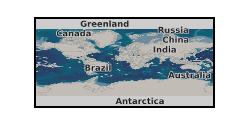
Data derived from UKCCSRC Call 2 Project C2-181. The journal article can be found at http://dx.doi.org/10.1016/j.fuel.2017.03.072. Sorption enhanced chemical looping steam reforming of methane (SE-CLSR) relies on the exothermicity of both a metal catalyst’s oxidation and the in situ CO2 capture by carbonation onto a solid sorbent to provide the heat demand of hydrogen (H2) production by steam reforming while generating a nearly pure H2 product. A brief thermodynamic analysis to study the main features of the SE-CLSR process is done prior to the reactor modelling work. Later, one dimensional mathematical model of SE-CLSR process in the packed bed configuration is developed using gPROMS model builder 4.1.0 under the adiabatic conditions. This model combines reduction of the NiO catalyst with the steam reforming reactions, followed by the oxidation of the Ni-based reduced catalyst. The individual models of NiO reduction, steam reforming with in situ CO2 capture on Ca-sorbent, and Ni re-oxidation are developed by using kinetic data available in literature and validated against previous published work. The model of SE-CLSR is then applied to simulate 10 alternative cycles of the fuel and air feed in the reactor. The performance of the model is studied in terms of CH4 conversion, CO2 capture efficiency, purity and yield of H2. The sensitivity of the process is studied under the various operating conditions of temperature, pressure, molar steam to carbon ratio (S/C) and mass flux of the gas phase. In this work, the operating conditions used for the production of H2 represent realistic industrial production conditions. The sensitivity analysis demonstrates that the developed model of SE-CLSR process has the flexibility to simulate a wide range of operating conditions of temperature, pressure, S/C and mass flux of the gas phase.
-
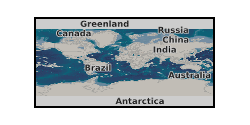
This Microsoft Excel document contains 8 worksheets providing data produced by research as part of EPSRC Grant #EP/K036033/1. These data are presented and discussed in the manuscript "The Inherent Tracer Fingerprint of Captured CO2." by Flude, S. Györe, D., Stuart, F.M., Zurakowska, M., Boyce, A.J., Haszeldine, S., Chalaturnyk, R., and Gilfillan, S. M. V. (Currently under review at IJGGC). Data include samples collected, gas concentrations, stable isotope data and noble gas data. This data relates to publication https://doi.org/10.1016/j.ijggc.2017.08.010.
-
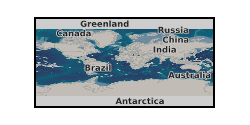
NERC grant NE/R013535/1. Here we present the dataset collected during a brine-CO2 flow-through test using a synthetic sandstone with oblique fractures, performed under realistic reservoir conditions stress. We monitored geophysical, mechanical and transport properties, for drainage and imbibition conditions, representative of the injection and post-injection stages of the CO2 storage process. We collected ultrasonic P- and S-wave velocities and their respective attenuation factors, axial and radial strains, electrical resistivity, pore pressure, temperature and brine and CO2 partial flows (from which relative permeability was later calculated).
-
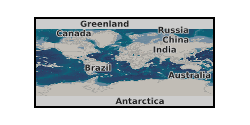
Dupont, Valerie (2016) Data for "Kinetics study and modelling of steam methane reforming process over a NiO/Al2O3 catalyst in an adiabatic packed bed reactor" in International Journal of Hydrogen Energy. University of Leeds. Data file containing datasets used to generate the figures and tables in the paper. [Dataset] https://doi.org/10.5518/126. [Publication] http://doi.org/10.1016/j.ijhydene.2016.11.093
-
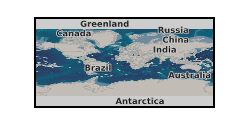
The data is collected in North China Electric Power University (NCEPU) on a 1-inch bore, gas-liquid two-phase, high pressure (up to 72bar), ambient temperature CO2 flow test rig from 19th May to 3rd June 2016. Single phase gas and liquid information are provided by Coriolis meter and mixed together. Then a vertical Coriolis meter is used to measure the two-phase mixture together with a DP transmitter measuring differential pressure across the vertical Coriolis meter under test. UKCCSRC Call 2 project: CO2 Flow Metering through Multi-Modal Sensing and Statistical Data Fusion. Grant number: UKCCSRC-C2-218. Published papers: 1) Mass flow measurement of two-phase carbon dioxide using Coriolis flowmeters (https://doi.org/10.1109/I2MTC.2017.7969891). 2) Mass flow measurement of gas-liquid two-phase CO2 in CCS transportation pipelines using Coriolis flowmeters (https://doi.org/10.1016/j.ijggc.2017.11.021).
-

The spreadsheet gathers the data collected during a brine:CO2 flow-through experiment conducted on a weakly-cemented synthetic sandstone core sample using the multiflow experimental rig for CO2 experiments, designed and assembled at the National Oceanography Centre, Southampton. The test was configured to assess geophysical monitoring and deformation of reservoirs subjected to CO2 injection in shallow weakly-cemented (North Sea-like, e.g., Sleipner) CO2 storage sandstone reservoirs. The tests was conducted in the rock physics laboratory at the National Oceanography Centre, Southampton, during 2015-2016, as part of the DiSECCS project with funding from the United Kingdom’s Engineering and Physical Sciences Research Council (EPSRC grant EP/K035878/1) and the Natural Environment Research Council (NERC). The experiment was a steady state brine-CO2 flow-through test in which realistic shallow CO2 geosequestration conditions were simulated, to related geophysical signatures to the hydrodynamic and geomechanical behaviour of the rock sample. The confining and pore pressure conditions were similar to those estimated for shallow North Sea Sleipner-like, storage reservoirs, but simulating inflation/depletion cyclic scenarios for increasing brine:CO2 fractional flow rates. The data include ultrasonic P- and S-wave velocities and their respective attenuation factors, axial, radial and volumetric strains, and electrical resistivity; also relative permeability to both fluids (CO2 and brine) is displayed as a function of pore volume times, associated to increasing CO2 to brine contents in the sample.
-
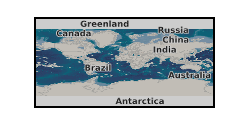
Data derived from UKCCSRC Call 2 Project C2-181. The journal article can be found at https://doi.org/10.1016/j.ijhydene.2017.05.222. The sorption enhanced steam reforming (SE-SMR) of methane over the surface of 18 wt. % Ni/Al2O3 catalyst and using CaO as a CO2-sorbent is simulated for an adiabatic packed bed reactor. The developed model accounts for all the aspects of mass and energy transfer, in both gas and solid phase along the axial direction of the reactor. The process was studied under temperature and pressure conditions used in industrial SMR operations. The simulation results were compared with equilibrium calculations and modelling data from literature. A good agreement was obtained in terms of CH4 conversion, hydrogen yield (wt. % of CH4 feed), purity of H2 and CO2 capture under the different operation conditions such as temperature, pressure, steam to carbon ratio (S/C) and gas mass flux. A pressure of 30 bar, 923 K and S/C of 3 can result in CH4 conversion and H2 purity up to 65% and 85% respectively compared to 24% and 49% in the conventional process.
-

Compilation of CO2 release field experiments conducted worldwide for which the research results are publicly available prior to May 2017. This includes 14 field sites and 41 field experiments. For each field site, where possible, there is data on: The project: including primary aims, partners, total funding, duration, current status, website. Site information: including geology (target formation and overburden), hydrology, environment. Field experiment set-up: including injection depth, well orientation. Summary activity: total number of experiments at the site, total CO2 released. For each experiment at each site, where possible, there is data on: Injection parameters, including injection strategy, rate, duration, start and end date, CO2 source and properties, use of tracers; Site parameters, such as groundwater depth at time of experiment; Leakage to surface, including whether CO2 leakage to surface occurred, quantitation; Characteristics of surface leakage, including location, distribution, time taken to reach surface, evolution as experiment progresses; Subsurface CO2 spread, in soil gas and groundwater interaction, environmental impact; Monitoring including area monitored, duration of monitoring before, during, and after the release. Data sources are clearly cited. Paper reference: https://www.sciencedirect.com/science/article/pii/S0012825218304264?dgcid=author.
-

The spreadsheet gathers the data collected during an experiment conducted on a Utsira Sand formation core sample to complements and constrains existing geophysical monitoring surveys at Sleipner and, more generally, improves the understanding of shallow weakly-cemented sand reservoirs. The tests were conducted in the rock physics laboratory at the National Oceanography Centre, Southampton, during 2016, as part of the DiSECCS project with funding from the United Kingdom’s Engineering and Physical Sciences Research Council (EPSRC grant EP/K035878/1) and the Natural Environment Research Council (NERC). The experiment was a steady state brine-CO2 flow-through test to simultaneously evaluate ultrasonic waves, electrical resistivity (converted into pore fluid distribution) and mechanical indicators during CO2 geosequestration in shallow weakly-cemented reservoirs. The confining and pore pressure conditions were similar to those estimated for Sleipner (North Sea – like storage reservoirs), but simulating inflation/depletion cyclic scenarios for increasing brine:CO2 fractional flow rates. The data include primary ultrasonic wave velocities and attenuation factors, axial and radial strains, and electrical resistivity. Also, we provide a velocity-saturation relationship of practical importance to CO2 plume monitoring, obtained from the inversion of ultrasonic velocity and attenuation data and extrapolation of results to field-scale seismic-frequencies using a new rock physics theory. The dataset is linked to this publication: http://www.sciencedirect.com/science/article/pii/S1750583617306370.
-

The spreadsheet gathers the data collected during a brine:CO2 flow-through experiment conducted on a synthetic sandstone core sample to present the capabilities of a novel 'multiflow experimental rig for CO2 experiments' designed and assembled at the National Oceanography Centre, Southampton. The test was configured to assess geophysical monitoring techniques in shallow tight (North Sea-like) CO2 storage sandstone reservoirs. The tests were conducted in the rock physics laboratory at the National Oceanography Centre, Southampton, during 2015, as part of the DiSECCS project with funding from the United Kingdom's Engineering and Physical Sciences Research Council (EPSRC grant EP/K035878/1) and the Natural Environment Research Council (NERC). The experiment was a steady state brine-CO2 flow-through test to replicate CO2 geosequestration conditions and evaluate geophysical monitoring techniques. The confining and pore pressure conditions were similar to those estimated for shallow North Sea - like storage reservoirs, but simulating inflation/depletion cyclic scenarios for increasing brine:CO2 fractional flow rates. The data include ultrasonic P- and S-wave velocities and their respective attenuation factors, axial strains, and electrical resistivity; also relative permeability to both fluids (CO2 and brine) is displayed as a function of pore volume times, associated to increasing CO2 to brine contents in the sample.
 NERC Data Catalogue Service
NERC Data Catalogue Service